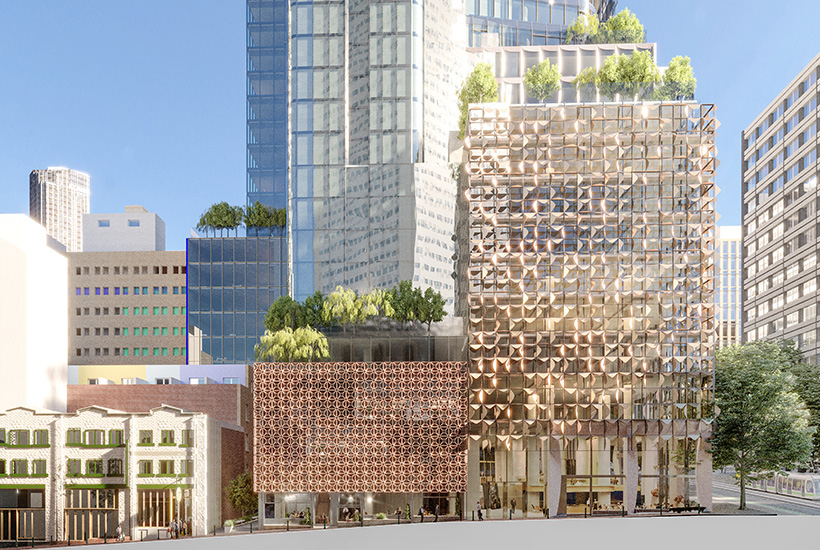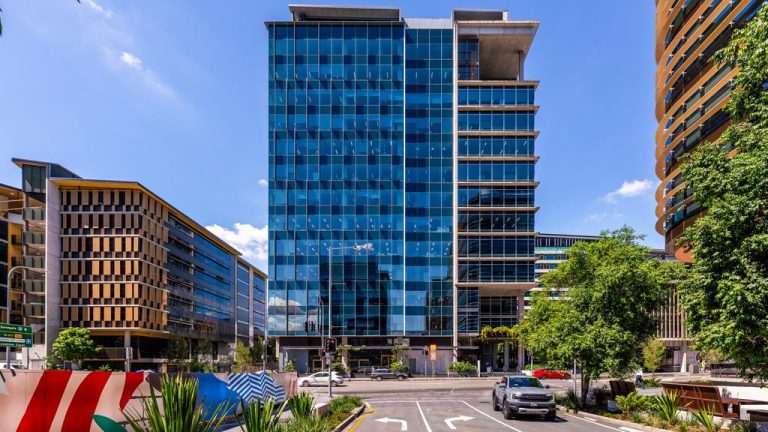Striking solar skin developments may help lure workers back to cities

Commercial buildings that are both beautiful and sustainable will be key in enticing remote workers back to the office post-COVID, architects, developers and environmental advocates say.
New designs must be exciting to compete with the comfort and flexibility of home, and also appeal to new value systems.
It was this that drove Cbus Property in November to submit a redesign of its already-approved 48-storey Melbourne tower at 435 Bourke Street. The new development will be one of the world’s first large-scale commercial developments to integrate a solar skin — or building-integrated photovoltaics technology, materials that form part of a building’s structure and harness energy from the sun to generate electricity.
Chief executive officer Adrian Pozzo said he wanted to create a building that will allow businesses to attract and retain staff in the post-COVID era.
“We’re trying to be ahead of the game,” he said. “Everyone’s looking for the next generation of building.”
Cian Davis, director of architectural firm Bates Smart who led the design, said the office must now become more than just a place to work.
“I think the generic office is going to struggle. The environment needs to be stimulating and meaningful and have purpose,” he said.
“The pandemic has sharpened our thinking about our relationship to the natural world. Your workplace captures your concern for the environment and I think that’s a really positive thing.”
Jorge Chapa, head of market transformation at the Green Building Council of Australia, said solar skin facades also benefit workers’ mental health, because they flood buildings with sunshine and allow fantastic views while tackling overheating and demand on energy for cooling.
“It’s taking something that is usually a problem — the amount of sun hitting the building — and combining it with an exciting piece of technology that absorbs that energy and turns it into electricity while also allowing a lot of light into the building.”
Need for direct sunlight
Nevertheless, solar skins may not be feasible if the building faces south or west, or if it’s boxed in by neighbouring structures.
And even with perfect solar access, current BIPV technology remains unable to completely power a building the size of a skyscraper.
The Cbus development will occupy a corner block with excellent solar access, but its solar skin can only generate 20% of the building’s electric base requirements, with the balance to be powered by off-site renewable energy.

Experts say buildings like the Cbus tower need to have sustainable functions to entice more workers back to the office. Picture: Bates Smart
Associate Professor Rebecca Yang is leader of the solar energy application lab at RMIT University, which has incorporated BIPV panels into its Design Hub at the Carlton campus in Melbourne.
She said interest in BIPV has rapidly intensified in recent years but the technology is still relatively new. She expects efficiencies to rapidly improve in time.
“New innovations are coming to market and leading building firms are starting to take notice,” she said.
Mr Davis agrees the performance of BIPV will only continue to evolve, making solar skins “more and more viable” as they also become “more visually acceptable” — with the dots and blue tints of the past making way for panels that are completely transparent.
“We’re at the beginning of a technology that’s improving really, really rapidly,” he said. “I think this will become more feasible and more achievable as more products come to market. I suspect it will become pretty commonplace in the next few years.”
Incentives and education
For BIPV to be adopted widely, Prof Yang believes industry education is crucial, and governments should play a larger role in promoting the technology.
“A majority of the products are produced overseas so the Australian building industry is not yet familiar with the available products, costs and certificates,” she said. “We need to train architects, facade engineers, fire engineers, electrical engineers and building surveyors.”

Sections of the facade of RMIT’s Deign Hub building in Carlton feature BIPV solar panels. Picture: RMIT
We may also see sustainability loans incentivising businesses to go green.
In November property trust Charter Hall announced it had funded a $500 million sustainability-linked loan that directly links its financing costs to sustainability performance targets and independent sustainability reporting standards.
Chief executive officer Carmel Hourigan said the loan was partly in response to “investor demand for high quality assets that deliver environmental and social value”.
Prof Yang and Mr Chapa hope the Cbus development may inspire more companies to adopt BIPV technology on both large and small buildings, and in new developments as well as retrofits.
“The Australian building industry has a history of adopting technologies quickly,” Mr Chapa said. “You could see this being spread very quickly where it makes sense from a solar access perspective.”







